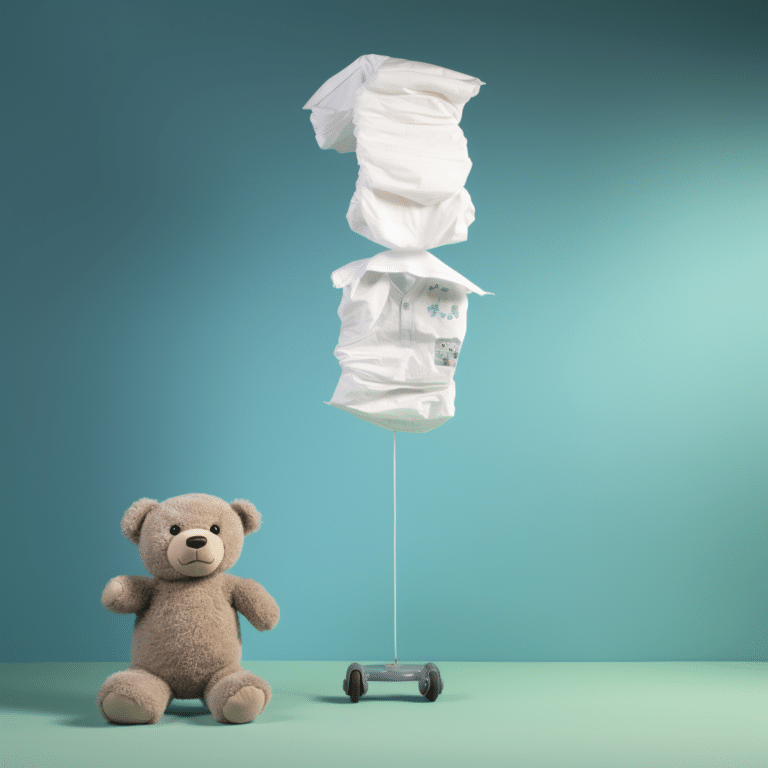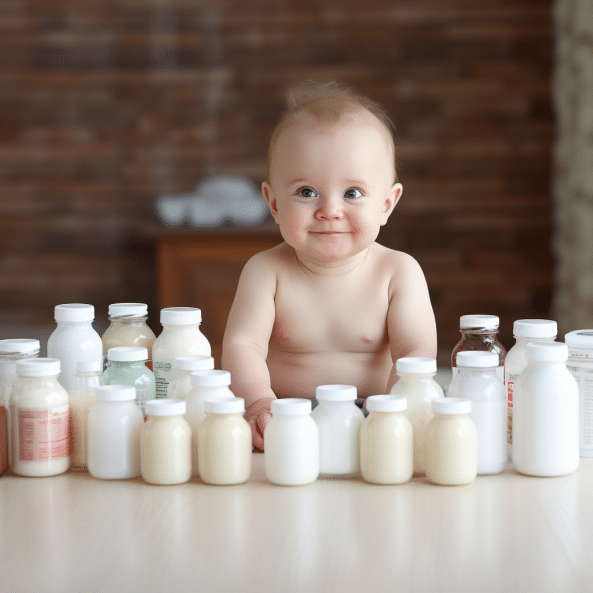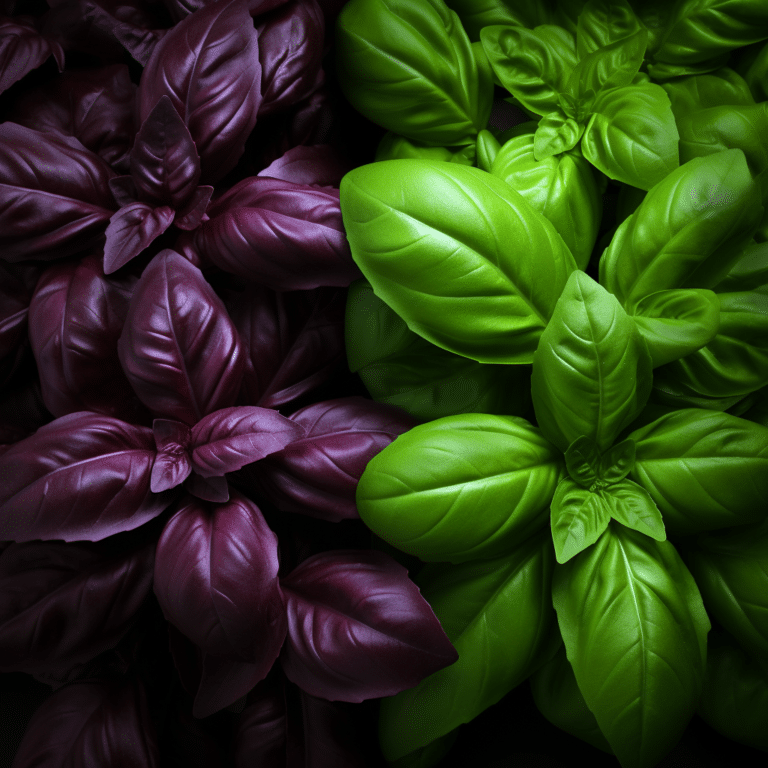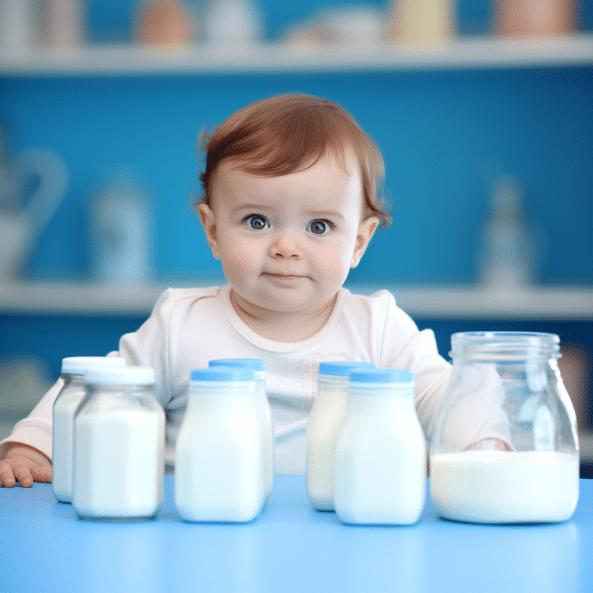Silicone vs Mesh Baby Feeders: Which Is Best?
You woke up one morning and realized that you were now a parent. Wow, this is exciting! But what do you need to get ready for the new member of your family?
It is at this point that you realize there are countless different baby feeders on the market. There is a range from bottles to cups to baby spoons and so on. What if you’re told that these can be broken down into two groups: silicone and mesh.
Well, this article helps you differentiate between silicone and mesh feeders. Both feeders have advantages and disadvantages but in the end, you will have a clear picture of which feeder suits your baby best.
![]()
There are many reasons why newborns should use feeders.
- Feeding is one of the most important things for newborns, so you should feed them as much as possible to ensure that they are getting all of the nutrients they need.
- Feeding your baby will help with bonding and attachment. Meaning it is an important part of building a relationship with them, which will last their whole lives.
- Feeding can help with sleep, especially if you have colic or reflux issues where they need to eat while they sleep or else they won’t be able to get any relief from their discomfort without eating right before bedtime or waking up in the middle of the night because they’re hungry again.
Silicone Feeder
Silicone baby feeders are a great alternative to plastic and glass baby bottles. They’re also easier to clean, more durable, and can be used for anything from breast milk to formula.
Silicone doesn’t retain odors as plastic does, so you don’t have to worry about your baby not wanting to drink from it because of an unpleasant smell. Silicone is also easy to sanitize in the dishwasher or in boiling water.
It is much more durable than glass or steel, so these feeders can withstand drops and bumps without breaking or cracking. You won’t have to worry about replacing them every time they get knocked over.
If you’re worried about your baby getting his hands on the silicone nipple and ingesting some of it, don’t be. Silicone is non-toxic and BPA-free, so it’s safe for babies who might chew on it while nursing or drinking at their leisurely pace.
What to Put in a Silicone Baby Feeder
Banana: The first thing you need to put in silicone baby feeders is bananas. They are a great source of potassium and fiber. They’re also an excellent way to sneak some fruit into your toddler’s diet, which is always a challenge. They can get mashed up with the blender or food processor, or simply mashed by hand.
Fresh Fruits: You can add pineapple, strawberry, and kiwi. You can also add mangoes and papaya. These fruits are helpful for your baby because they contain vitamins and minerals that are good for your baby’s health.
By adding these fruits, your baby will get more nutrients which will help them grow better. If you want to give your baby a healthy diet, you should always be aware of what they eat and drink every day.
Red Meat: Red meat has a lot of iron and vitamin C, both of which are important for growing babies. Vitamin C helps build strong bones and teeth, while iron helps make red blood cells that carry oxygen throughout the body.
You can also add other foods that are good for your baby’s growth, like fish and eggs.
Frozen Fruit Puree: One of the things you need to put in silicone baby feeders is frozen fruit puree. The puree melts as it’s heated up and becomes a delicious treat for your baby. This is an easy way to get more fruits and vegetables into their diet without making them feel like they’re eating “yucky” veggies.
Mesh Feeders
Mesh baby feeders are a simple, convenient, and affordable way to feed your baby. They’re made out of a special kind of mesh that allows air to flow through the product, so you can use them for both solid foods and liquids.
The mesh on these products is actually made from a very thin plastic material, which makes it easy to clean and reuse. The mesh is also flexible enough that you can fold it up and take it with you when traveling.
You can use mesh baby feeders in all sorts of ways: to feed your baby while they’re awake or asleep; while they’re sitting up or lying down. Even if they’re in a car seat or stroller! You can also use them to help bring in more air into your child’s lungs. If they have trouble breathing due to allergies or asthma conditions.
They are also great because they allow parents to be able to see what their child is eating or drinking at all times—no need for guessing games. It makes them especially useful for those who have food allergies or other concerns about what goes into your child’s mouth (such as too much sugar).
What to Put in a Mesh Baby Feeder
- A mesh baby feeder that comes with a lid or cover that can be used as an eating tray (this will allow your child to eat and drink at the same time). You should look for one that has multiple compartments so that you can separate different foods making. It easier for them when they start eating solid foods.
- Some soft spoons or forks (if you don’t already have some). These will make it easier for your child to pick up small pieces of food without scraping their teeth.
- Water! Your baby needs plenty of water each day so that their bodies can grow properly. It’s also important for them to stay hydrated because if they don’t take in enough water, then it could cause dehydration.
Silicone feeders Vs Mesh Feeders
When you’re choosing a feeding product for your baby, there are a lot of different options on the market. Silicone feeders and mesh feeders are two popular choices, but which one is better?
Silicone feeders are made from silicone rubber, which makes them flexible and easy to squeeze. They come in many different shapes and sizes, including teething rings, soakers, pacifiers, toys, and more.
The material is soft and gentle on your baby’s gums and can be used as a teether as well as an adult toy. Silicone also has antibacterial properties that prevent mold from growing inside the toy. Most silicone toys can also be boiled to sanitize them between uses if needed.
Mesh feeders are made of mesh fabric. They allow food to pass through while keeping larger pieces out of reach of babies who are still learning. How to chew properly without choking on small pieces or getting sick from bacteria hiding inside those little holes. Where food gets trapped when you’re trying to clean it up later down the line. They come in all sizes from newborn size up through toddler age, so you can use one until your child grows out.
![]()
Time to Choose the Best Baby Feeder
If you’re looking to start bottle feeding, or are struggling with it and looking for tips and advice, hope this article was helpful to you. Feeding your baby with an easy-to-use silicone or mesh feeder can make a big difference. In how happy everyone is with the process. Just remember that silicone feeders take some getting used. To and be patient with yourself if you have trouble in the beginning.





